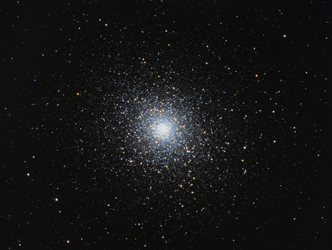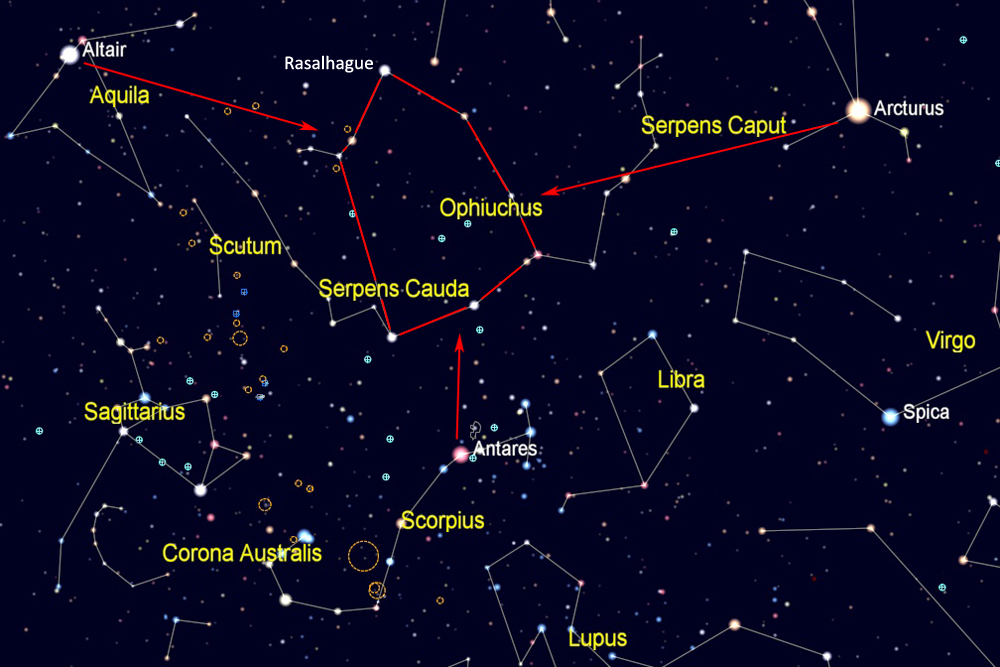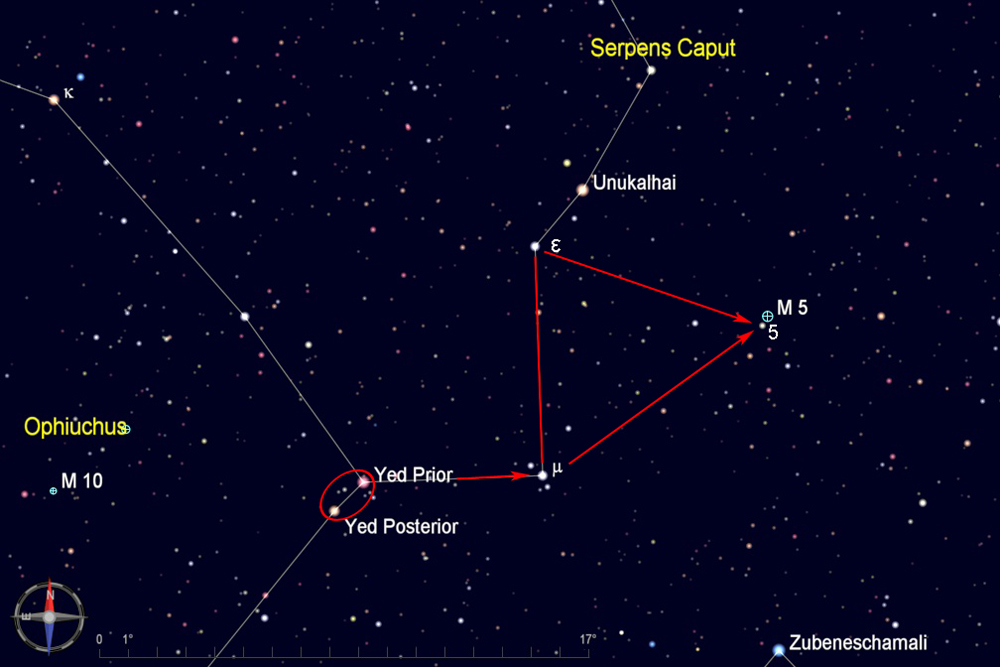| Messier 5 is a superb object, one of the brightest globular clusters in the sky. The stars around the edges of this dense cluster can be resolved in even small telescopes, and its central core is very dense and bright. The view through telescopes with apertures of 10 inches or more is truly spectacular. |
 |
| Evening visibility: |
May-September |
| Best viewed with: |
telescope |
| |
Printable chart (pdf) |
View larger image |
Directions:
Start by finding the constellation Ophiuchus, the serpent bearer, a large oval shape that is west of Arcturus (part of the Spring Triangle), east of Altair (part of the Summer Triangle), and north of Antares. The oval is about 25 degrees from top to bottom, and its main stars are second and third magnitude, so they should be easy to see with the naked eye even with moderate light pollution.
|
 |
| Find the pair of stars Yed Posterior and Yed Prior on the west side of Ophiuchus, circled in the chart below. From this pair, look about 7 degrees west for μ (mu) Serpentis, and then 7 degrees north for ε (epsilon) Serpentis. Use these two stars to visualize an equilateral triangle pointing west, and aim your scope or binoculars there. M5 is less than 1/3 degree from a 5th magnitude star (which is coincidentally numbered 5 Serpentis). |
 |
| Star charts created with Cartes du Ciel |
| |
| |


